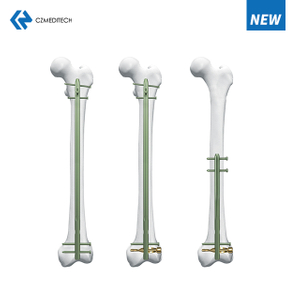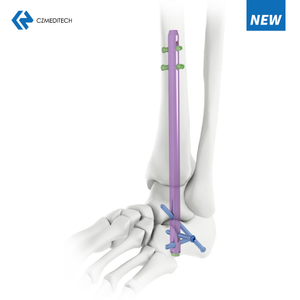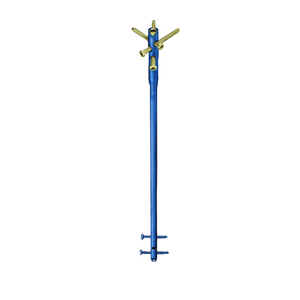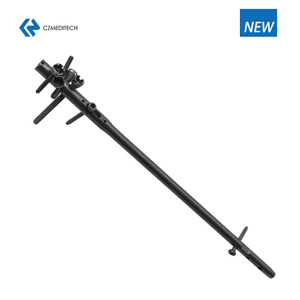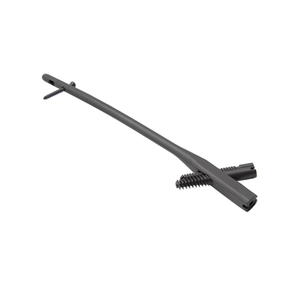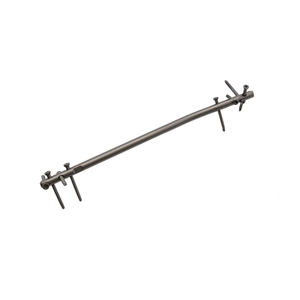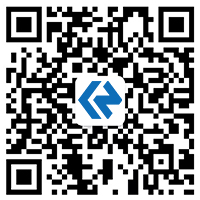Expert Femoral Nail: Everything You Need to Know
When it comes to treating fractures of the femur, the expert femoral nail is one of the most common methods used by orthopedic surgeons. It is a surgical procedure that involves inserting a metal rod into the femur to stabilize the bone and promote healing. In this article, we will discuss the expert femoral nail in detail, from its indications to its potential complications.
What is an expert femoral nail?
An expert femoral nail is a type of intramedullary nail that is used to treat fractures of the femur. It is a metal rod that is inserted into the hollow center of the femur bone and is designed to stabilize the bone and promote healing. Expert femoral nails are typically made of titanium or stainless steel and come in different sizes to accommodate different patient needs.
Indications for an expert femoral nail
An expert femoral nail may be recommended by an orthopedic surgeon for a number of reasons, including:
Fractures of the femur
Fractures of the hip joint
Malalignment of the femur
Non-union or delayed union of a femur fracture
Bone tumors in the femur
How is an expert femoral nail inserted?
The insertion of an expert femoral nail is performed under general or regional anesthesia. The surgeon will make a small incision in the skin over the femur bone and will insert a guide wire into the bone. The guide wire is used to create a pathway for the nail to be inserted into the bone. Once the guide wire is in place, the surgeon will use a reamer to prepare the bone for the nail. The expert femoral nail is then inserted into the femur bone and is secured in place with screws or locking bolts.
Advantages of an expert femoral nail
There are several advantages to using an expert femoral nail for the treatment of femur fractures, including:
Potential complications of an expert femoral nail
As with any surgical procedure, there are potential complications associated with the insertion of an expert femoral nail. These may include:
Infection at the site of the incision
Nerve damage
Blood clots
Malalignment of the bone
Delayed healing or non-union of the fracture
Hardware failure or breakage
Recovery after an expert femoral nail procedure
Recovery after an expert femoral nail procedure will vary depending on the extent of the fracture and the patient's overall health. Most patients will need to use crutches or a walker for a period of time after the surgery. Physical therapy may also be recommended to help regain strength and mobility in the affected leg. It is important to follow all post-operative instructions provided by the surgeon to ensure the best possible outcome.
Conclusion
An expert femoral nail is a commonly used surgical technique for the treatment of fractures of the femur. It offers several advantages over traditional methods of treatment and is generally well-tolerated by patients. However, as with any surgical procedure, there are potential complications that should be considered. If you have suffered a femur fracture or have been diagnosed with a bone tumor in the femur, talk to your orthopedic surgeon about whether an expert femoral nail may be a viable treatment option for you.
FAQs
How long does it take to recover after an expert femoral nail procedure? Recovery time can vary depending on the extent of the fracture and the patient's overall health. Most patients will need to use crutches or a walker for a period of time after the surgery, and physical therapy may also be recommended. Full recovery can take several months.
Can an expert femoral nail be removed? In some cases, an expert femoral nail may need to be removed if it causes discomfort or other complications. This is typically done as a separate surgical procedure.
Is an expert femoral nail covered by insurance? Most health insurance plans will cover the cost of an expert femoral nail procedure, although individual policies may vary. Patients should check with their insurance provider to determine coverage.
How long does the expert femoral nail stay in place? The expert femoral nail is designed to stay in place permanently, although it may need to be removed in certain cases.
Are there any restrictions on activity after an expert femoral nail procedure? Patients may need to limit certain activities, such as heavy lifting or high-impact sports, during the recovery period. The surgeon will provide specific guidelines for activity restrictions based on the individual patient's needs.
English
Français
Русский
Español
العربية
Português
Deutsch
italiano
日本語
한국어
Nederlands
Tiếng Việt
ไทย
Polski
Türkçe
አማርኛ
ພາສາລາວ
ភាសាខ្មែរ
Bahasa Melayu
ဗမာစာ
தமிழ்
Filipino
Bahasa Indonesia
magyar
Română
Čeština
Монгол
қазақ
Српски
हिन्दी
فارسی
Kiswahili
Slovenčina
Slovenščina
Norsk
Svenska
українська
Ελληνικά
Suomi
Հայերեն
עברית
Latine
Dansk
اردو
Shqip
বাংলা
Hrvatski
Afrikaans
Gaeilge
Eesti keel
Māori
नेपाली
Oʻzbekcha
latviešu
অসমীয়া
Aymara
Azərbaycan dili
Bamanankan
Euskara
Беларуская мова
भोजपुरी
Bosanski
Български
Català
Cebuano
Corsu
ދިވެހި
डोग्रिड ने दी
Esperanto
Eʋegbe
Frysk
Galego
ქართული
guarani
ગુજરાતી
Kreyòl ayisyen
Hausa
ʻŌlelo Hawaiʻi
Hmoob
íslenska
Igbo
Ilocano
Basa Jawa
ಕನ್ನಡ
Kinyarwanda
गोंगेन हें नांव
Krio we dɛn kɔl Krio
Kurdî
Kurdî
Кыргызча
Lingala
Lietuvių
Oluganda
Lëtzebuergesch
Македонски
मैथिली
Malagasy
മലയാളം
Malti
मराठी
ꯃꯦꯇꯥꯏ (ꯃꯅꯤꯄꯨꯔꯤ) ꯴.
Mizo tawng
Chichewa
ଓଡ଼ିଆ
Afaan Oromoo
پښتو
ਪੰਜਾਬੀ
Runasimi
Gagana Samoa
संस्कृत
Gaelo Albannach
Sepeti
Sesotho
chiShona
سنڌي
Soomaali
Basa Sunda
Wikang Tagalog
Тоҷикӣ
Татарча
తెలుగు
ትግንያውያን
Xitsonga
Türkmençe
संस्कृत
ئۇيغۇرچە
Cymraeg
isiXhosa
ייִדיש
Yorùbá
isiZulu






























































